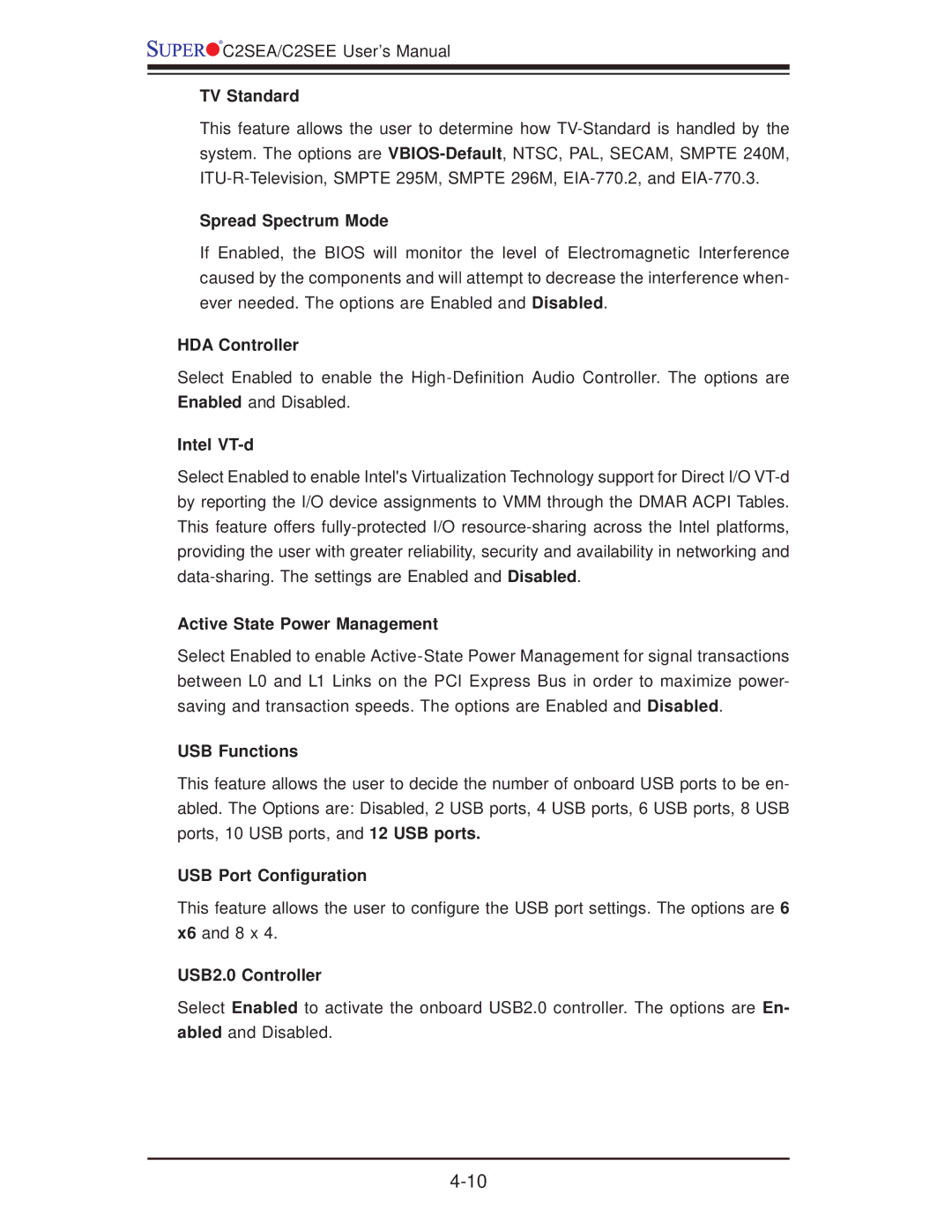
![]()
![]()
![]()
![]() C2SEA/C2SEE User’s Manual
C2SEA/C2SEE User’s Manual
TV Standard
This feature allows the user to determine how
Spread Spectrum Mode
If Enabled, the BIOS will monitor the level of Electromagnetic Interference caused by the components and will attempt to decrease the interference when- ever needed. The options are Enabled and Disabled.
HDA Controller
Select Enabled to enable the
Intel VT-d
Select Enabled to enable Intel's Virtualization Technology support for Direct I/O
Active State Power Management
Select Enabled to enable
USB Functions
This feature allows the user to decide the number of onboard USB ports to be en- abled. The Options are: Disabled, 2 USB ports, 4 USB ports, 6 USB ports, 8 USB ports, 10 USB ports, and 12 USB ports.
USB Port Configuration
This feature allows the user to configure the USB port settings. The options are 6 x6 and 8 x 4.
USB2.0 Controller
Select Enabled to activate the onboard USB2.0 controller. The options are En- abled and Disabled.
